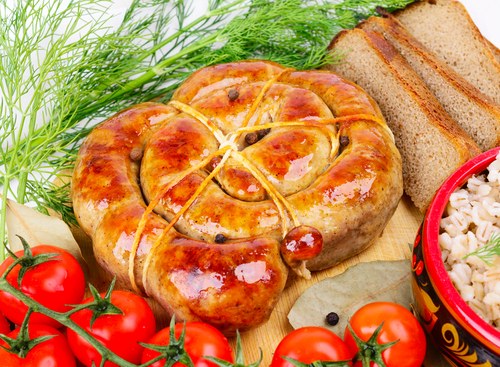
To most visitors in Germany, bratwurst is just bratwurst. However, to those who reside in this land, sausage is taken quite seriously. Germany is linked up with a number of geographic specific bratwursts, comprised of different meats and spices and cooked differently from one to the next. If you are planning a trip to Germany, be sure to follow this trail to the best wurst.
Frankfurter Würstchen: Most travelers touch down in Frankfurt as it is a major travel hub. They quickly head out of town to explore less of a business and banking side to Germany. However, you might want to stick around long enough to sample Frankfurter Würstchen. Purely made of poor, this wurst can only be made in the Frankfurt area. It has received Protected Geographical indication status in order to keep this type of wurst in Frankfurt. The sausage is prepared by cooking it in hot water. It isn’t boiled or grilled. Frankfurter Würstchen is also one of Germany’s most historic version of wurst. It has been made since the 13th century.
Thüringer Rostbratwurst: If you find yourself in the state of Thüringen, most likely you will run into this wurst, another of Germany’s sausages to receive Protected Geographical Indication status. This wurst is composed of pork and veal and takes on a long and thin shape. It is generally seasoned with marjoram, garlic, caraway, salt and pepper. Thüringer Rostbratwurst is also something a tradition in Germany. Many say its origins stem from 600 years ago.
Nürnberger Rostbratwurst: If you find yourself in Nuremberg, you will start to see smaller looking wurst, called Nürnberger Rostbratwurst. The Nuremburg staple is a smaller sized sausage with a great deal of spice. Generally, they will grill up the Nürnberger Rostbratwurst, served at least six on one plate. Some like to eat this Protected Geographical Indication sausage with mustard or a pretzel. The Nürnberger Rostbratwurst is pork based and largely seasoned with marjoram.
Weisswurst: Typically found in Bavarian and throughout Southern Germany, Weisswurst doesn’t tend to look like the other wursts. White in color, this wurst contains veal and sometimes pork. Parsley, onion, and cardamom might also be added for spice. Weisswurst is generally boiled, not grilled. To eat Weisswurst correctly, you should dip it in sweet German whole grain mustard and also accompany it with a pretzel.







